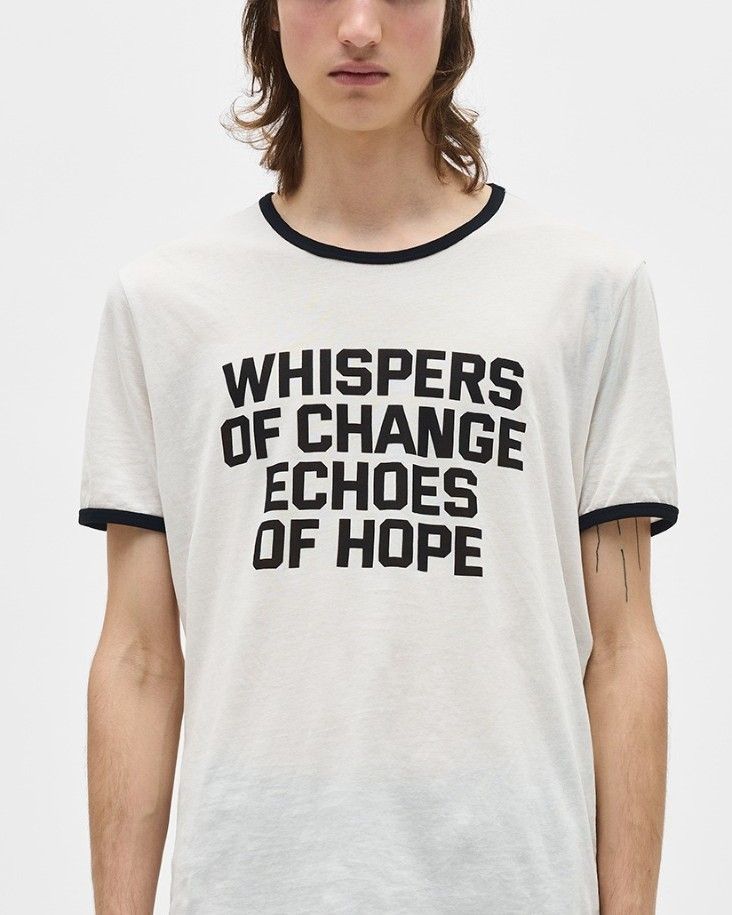
Can a young designer save a legacy brand? Fashion keeps putting designers into the position to rescue a failing brand, but can they?
Attachment is a common thing in fashion. Whether we like to admit it or not, we can feel a strong connection to our clothes. And just as people tend to grow fond of the memories they made wearing the garments, brands tend to bond with their creative director. The designer brings their vision and aesthetic into the brand and builds a legacy that way. Usually, this position gets changed every few years, and once someone leaves, they take their vision with them. The brand transforms into a clean slate again, ready for someone new, someone to take the brand to a new level. In the 90s, the design directions of not only the big brands have been very personal, but also of the smaller brands, especially of the namesake ones. There was Maison Margiela, which was tied to the mysterious Margiela himself, Ann Demeulemeester, who almost felt inseparable from her brand, and Helmut Lang, whose founder defined a whole generation of fashion consumers and fans. When people speak about these brands, they almost exclusively reference the time when the original founder was still the creative head. Once they left, sold the label or got bought out – a lot of original fans lost their interest. These brands seem to be so personally attached to their original creative founder and one might wonder why they are still going, indeed, without them. Truth be told since Ann Demeulemeester sold her brand, no one was able to make a mark quite like she did. Most recently, Ludovic de Saint Serinin was appointed to be the brand’s creative director, and the brand’s original fans were distraught. From disapproval to utter shock – they didn’t believe Saint Sernin could continue Ann’s legacy or her cultural value. It felt like a classic mismatch, the designer who is obsessed with Instagram sexiness and the brand that shaped a generation of alternative fashion fans. Fast forward a few months later, he had his first show, and the buzz around him went quiet – until the 20th of May when the fashion house announced his exit.
RIP to the louche sex-appeal of Ann Demeleumeester by Ludovic de Saint Sernin. pic.twitter.com/wzSfhitpLG
— @PAM_BOY (@pam_boy) May 22, 2023
Taking over a legacy brand is never easy in the first place, but saving a brand that failed to be relevant in the past few years is a whole different game. The pressure is on – from all sides. This pressure was not only present in Saint Serinin’s case, but it was also present for all the creative directors that tried it before him. In fact, Anne Chapelle, one of the founders of the brand, told the Financial Times in 2019 that the label was facing «a steep decline» in revenues since Demeulemeester herself left in 2013. On the other side, archival pieces sold on resale platforms went steadily up in value and revenue. Vicki Liang, a fashion journalist based in London, says: «With these types of brands, it is definitely about designer loyalty. This is why I think Ann Demeulemeester and Ludovic didn’t work. Their fans don’t vibe with each other– and Ludovic fans weren’t going to the brand just because he was there.» This might explain why Saint Sernin failed to mesmerise the crowd of the brand, but in fashion there is no size or explanation that fits all types.
Fashion is obsessed with youth. It seems as if instead of giving young designers the resources and infrastructure they need, they put them into a position that lets the brand appear to be young and cool. Another even more current example is Peter Do at Helmut Lang. Appointed around a week ago, the announcement was welcomed with joy, support and cheerfulness. At first glance it seemed like a perfect fit: Do’s aesthetics are almost similar to archival Helmut Lang, as even the attitude of the two designers seems strikingly similar. At a second glance, Do is tasked with a similar job to Saint Sernin: to save a sleeping brand from irrelevance. Valerie Specht, a fashion writer and stylist from Munich, Germany, considers herself a Helmut Lang fan. Her Instagram feed has odes to the original pieces, he is one of her favourites, she signalises. On the question of whether she would buy Peter’s designs, she answers with a clear «no.» Her interest lies in Helmut himself, his vision, not in the brand per se. She raises an important point: a new creative director might open up an entirely new audience to the brand, but it risks losing its old one. With Peter Do at Helmut Lang, the aesthetics might seem similar, but the original Helmut consumer was most active in the 90s – right when the brand had its prime time. Now, more than two decades later, they have probably lost interest in the brand, adds Specht.
peter do for helmut lang?!? this makes so much sense with my fantasy pic.twitter.com/Vx5qpBw5sW
— High End Homo (@highendhomo) May 10, 2023
Liang would buy it – but not because of Helmut, she would buy it because of Peter. «I would buy it because of Peter since I am more invested in his brand. Helmut Lang at the moment is pretty lacklustre,» she says. With Peter and Helmut, it might be a different story, but when it comes down to it, Vicki thinks that Peter Do fans will support his namesake label over Helmut Lang. His audience is mostly young, and they might not have the financial means to keep two labels afloat at the same time. The core problem is not the creative director, it is the task. Reviving a label that was financially and culturally struggling might actually be harder than it seems for a team, let alone even one person. If it works out, it should be the whole team that is celebrated, not just one person. If it does not work out, it equally should not only be blamed on one person. It seems as if there is this pressure to keep a legacy going, even if that legacy is deeply tied to one specific person and time period. We have so many brands existing, there should not be a shame in preserving heritage without continuing to shed out new designs, new seasons and new concepts.















































